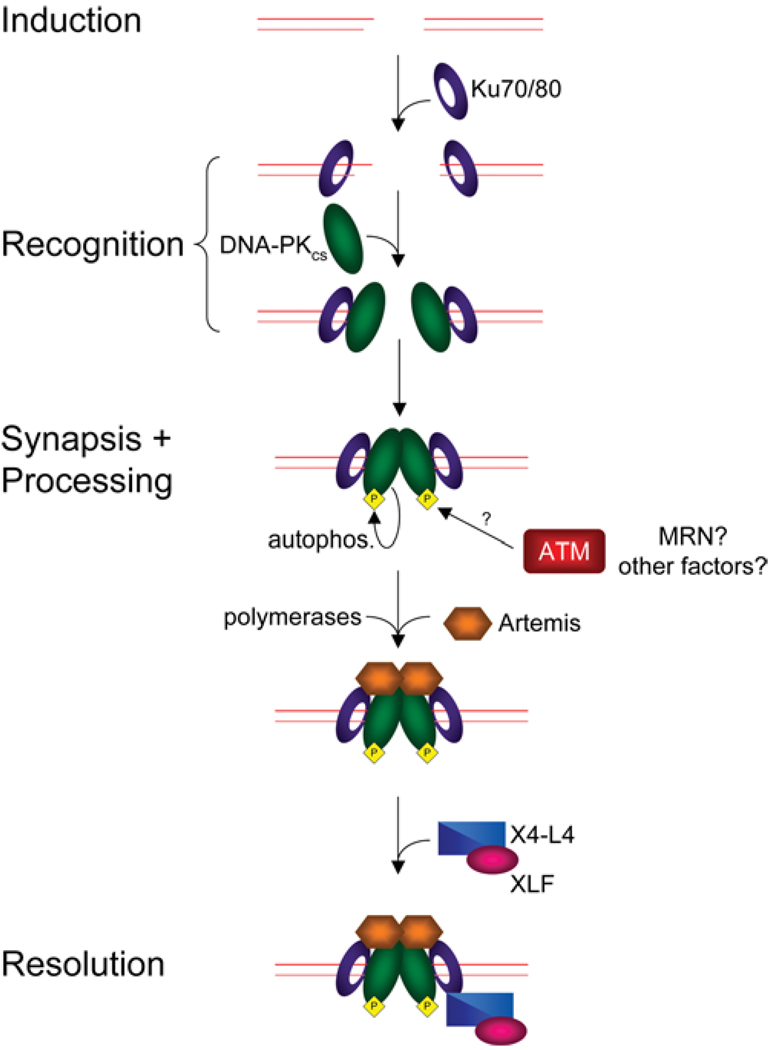Figure 1. NHEJ in mammalian cells.
Induction of a DSB forms DNA ends that are bound by the Ku heterodimer. Ku translocates inwards, allowing recruitment of DNA-PKcs to the DNA termini. The two DNA-PKcs molecules can then interact to tether the DSB ends together. Synapsis of DNA-PKcs triggers phosphorylation of DNA-PKcs [including autophosphorylation (autophos.)], altering the conformation and dynamics of DNA-PKcs. Phosphorylation of DNA-PKcs allows for recruitment of Artemis and other end-processing factors such as Pol X (DNA polymerare X) family members to generate the proper DNA ends required for ligation. Once the ends are processed, the X4-L4 complex, along with XLF, ligates the ends, repairing the break.

